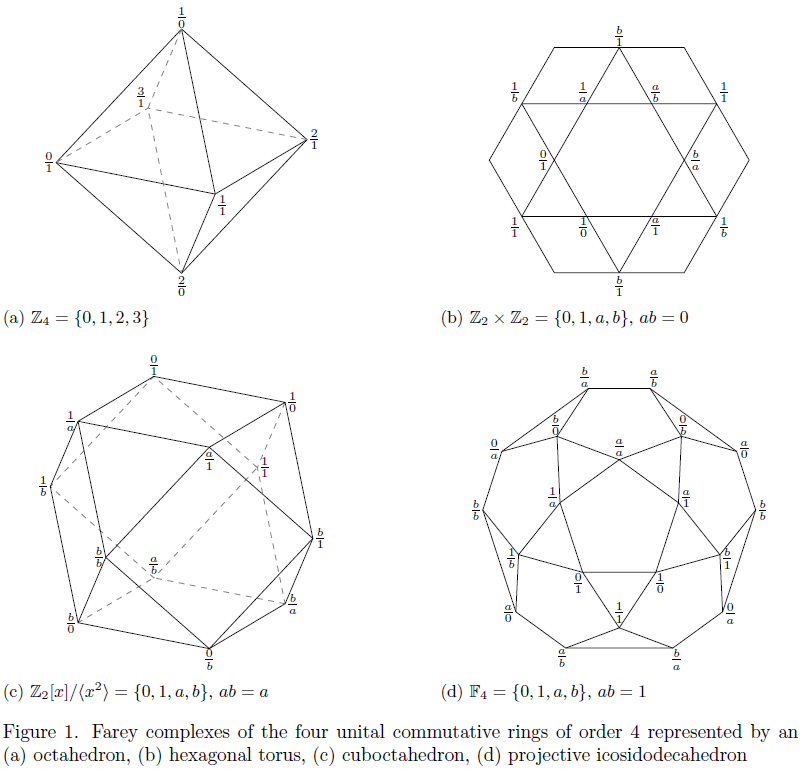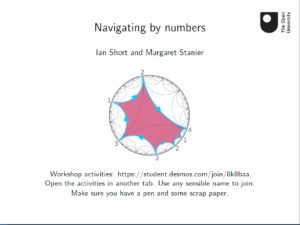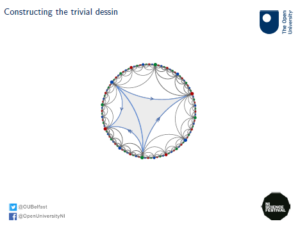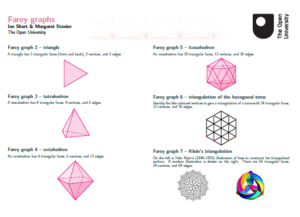Ian Short
September 25, 2024
July 11, 2023
A walk through Aspley Guise
For several years I’ve walked at first both my daughters, and then just my youngest daughter, to school in Aspley Guise. With a new school in September those journeys will end, so we have photographed the route, recording the biota we have encountered.
The journey starts from our front garden, with beech, hazel, and hawthorn trees, a rowan tree, and an apple tree. There’s a small pond buried in there too, where sparrows wash. Local gardeners and tree surgeons often knock on our door offering their services in tidying the garden up. We like it wild though.

Near our house is Aspley Guise golf course. An unmetalled road runs through it, which we follow (below). We saw a slowworm on it once (there are plenty nearby). E saw a grass snake on the street locally once.
The golf course has plenty of trees off the greens, where there are badger sets. I see them in the evenings occasionally. Red kites fly overhead, and buzzards, sparrowhawks, the odd kestrel, and tawny owls at night. Swifts fly over Woburn Sands for three months per year (May to August), and swallows and house martins live on the golf course – although very few this year.

Some fine ash trees grow in the neighbourhood that haven’t succumbed to ash dieback.

A small wood in the golf course shadows the path. I photographed the oak tree canopy above.

Hemlock is thriving! Thankfully it is left to grow.

We leave the golf course and enter Aspley Guise recreation ground. Oak trees abound. The finest is shown here. With space to grow and little competition it has a sprawling canopy.

Farther along we pass through a reasonably species rich field, bordered by lime trees. J eats the sorrel that grows in abundance.

The view from the field over Aspley Guise is worth a shot. We see lots in this field, my favourite being scarlet tiger moths (in summer).

We head down a steep path, with J in the lead, before reaching the village of Aspley Guise.

We’ve made it to the school. A spinney is opposite; it features on the school logo. The small tree in the foreground is occupied by flocks of bramblings in winter.

Looking back from the spinney is the school.

I head off on a circuitous route home. In the distance is Woburn.

These fields are owned by the Duke of Bedford Estate, as is much of the land around here. I won’t forgive the Estate for felling a local oak wood of hundreds of years old. It was the finest oak wood in the area.

The fields are occupied by skylarks. Many dragonflies are about, hawkers and chasers. This broad-bodied chaser flew ahead of me down the path, stopping every so often.

I reach the grounds of the modest sewage works, the vicinity of which is perhaps the most biodiverse location on my journey. It’s rich in yellowhammers, and usually one sits atop this hut. On this occasion, however, a song thrush has stolen the spot.

A view across the grounds near the sewage works. There’s a mixture of grasses and young trees. I see lots of birds here including whitethroats aplenty, linnets, and the occasional reed bunting.

Hundreds of butterflies this time of year, including marbled whites. This one has lost part of its wing to a bird or some brambles, perhaps.

I did manage a photograph of a yellowhammer, just. It’s near the centre of the picture, at the top of the tree.

Here’s a fine young oak tree. It has space to grow all around, so is heading outwards.

Many skippers are out in July.

I cross the road towards Aspley Woods. Some poplars mark the entrance. I’m unsure exactly what type of poplars they are, hybrids I think.
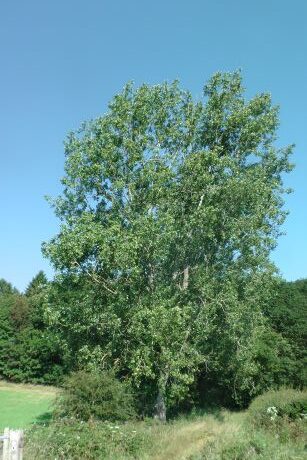
The wood is mixed; patches are managed in different ways. Some tall oaks shown below. Buzzards nest near the tops. I hear them screeching to one another.

Brambles and other scrubs are cleared. The tree canopy is thinned. I think to let light through for bluebells, which flourish for a couple of weeks each year.

Fifty metres away is this plantation of rows of young trees. The ground is littered with the plastic tubes, some twenty years old. I collect them sometimes and I’ve petitioned the Duke of Bedford Estate to remove them, without success. Sooner or later I’ll coordinate some work parties to remove them. Many of the plastic cases that lie dormant on the woodland floor for years become shelters for ants’ nests, so I find myself reluctant to move them. However, the plastic gradually breaks down, littering the ground with microplastics.

Below is the Mermaid’s Pond. It was once, I believe, a bathing pond for the Victorians. Now the water level is too low for bathing. Left alone it would dry up as willows, alders, and so on, grow and draw up the moisture. They are hacked down every so often. It may still dry up though in the long dry spells we now have.

A beautiful stairwell leads away from the Mermaid’s Pond to a new world above. During autumn, look out for siskins in the alders near the top.
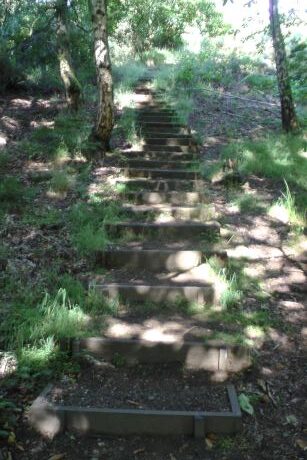
Made it! The sands of this heath justify the name “Woburn Sands”, the nearby town where I live. Gorse and broom dominate. Large areas are fenced off to protect the growing trees from the numerous muntjac deer. Also numerous are grey squirrels, which benefit from the nuts of the many sweet chestnut trees.

Farther along I enter another patch of older woodland. These tall, thin oak trees have shot up. Presumably they were planted at a similar time and made their way upwards in search of light. Plenty of chiffchaffs and willow warblers around here in spring.
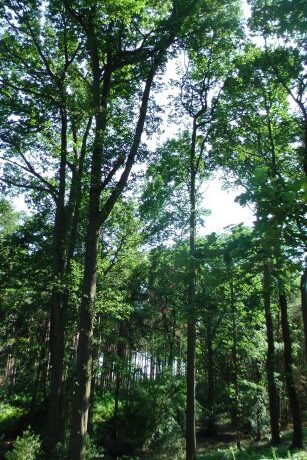
Ten years ago there were several massive beech trees. Some have since fallen or been taken down. The trunks were removed. They should have left them, because fallen beeches make great habitats. One or two still remain, like this one.
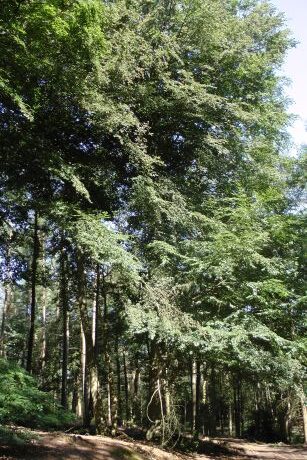
Beyond this is a conifer plantation and then Woburn Sands town. Thanks for following the journey!

February 8, 2022
Postdoc position in SL2-tilings
The Open University is recruiting a postdoctoral research associate to work on my EPSRC funded project The Farey framework for SL2-tilings. You can apply for it from the following link.
Postdoctoral Research Associate – The Farey framework for SL2-tilings
It starts on 1 July 2022 and lasts three years. Some background to the project can be found on the EPSRC project page
https://gow.epsrc.ukri.org/NGBOViewGrant.aspx?GrantRef=EP/W002817/1.
Additionally, the following paper gives some of the mathematics underpinning the project.
https://arxiv.org/abs/1904.11900.
That paper explores SL2-tilings over the integers using the Farey complex in the hyperbolic plane. Part of the project will involve Farey complexes for other rings, such as the Farey complexes for the four unital commutative rings of order four, shown below (click on the image for a clearer version).
I welcome queries!
My thanks to the EPSRC reviewers who supported the proposal making the project possible.
August 20, 2021
Rewilding Britain
I recommend this short video for the vision of Rewilding Britain.
March 20, 2021
Royal Institution Masterclass
Many thanks to those who attended today’s Royal Institution Masterclass on Navigating by numbers, which I hosted together with Margaret Stanier. The desmos activities will remain active for a couple of weeks yet, available at
https://student.desmos.com/join/8k8baa.
Here are the slides from the masterclass.
October 1, 2020
Maths Week Scotland
Thank you to those who joined Andrew and me tonight for the Navigating by numbers online workshop as part of Maths Week Scotland. Here’s the abstract for the workshop:
Our exploration will take us from intriguing frieze patterns of numbers, through triangulated polygons and repeated fractions, to a beautiful infinite tessellation with remarkable properties. Along the way we will meet the mathematicians who forged this path of discovery, and we will get a taste of deeper aspects of the subject.
And here’s a recording of the workshop itself:
February 22, 2020
The mathematics of dessins d’enfants
I had the pleasure today of delivering a workshop in Belfast on The mathematics of dessins d’enfants as part of the Northern Ireland Science Festival 2020. This workshop explored some of the more geometric aspects of the Navigating by Numbers outreach programme. The abstract sums it up:
The workshop will be an interactive exploration of the incredible mathematical theory of dessins d’enfants (“children’s drawings”). We can think of a dessin d’enfant as a shape that you obtain by gluing together a number of triangles. Remarkably, these simple objects give rise to far deeper mathematical ideas, which form an active subject of modern research. With models and illustrations, and hands-on activities, the workshop will explore some of the secrets of dessins d’enfants, and look at the mathematicians who have developed the subject.
The workshop is for those with appreciation of shape and symmetry. By exploring models and pictures, participants will appreciate the flavour of an exciting branch of contemporary mathematics. We will meet some beautiful geometric ideas, which will be a source of inspiration for aspiring mathematicians and artists alike!
Travelling to Belfast was an epic and thoroughly enjoyable trip. I don’t fly on aeroplanes – instead I caught a train from Milton Keynes to Holyhead, then a ferry from Holyhead to Dublin, and a train from Dublin to Belfast. I felt nostalgic for the familiar dump that surrounds Dublin Connolly Station. I used to live in Dublin, and took salsa classes near the station.
Many thanks to the creative, intelligent attendees of the workshop, of all ages, for a thoroughly enjoyable experience.
Screenshot of a slide from the workshop
February 5, 2020
Navigating by numbers
Today marks the launch of the Navigating by numbers outreach programme. The purpose of this programme is to communicate an attractive array of mathematical ideas centred on the Farey graph to as wide an audience as possible – from school learners to academic researchers.
My PhD student Margaret Stanier and I launched the programme with an interactive display at Maths Fest 2020, featuring origami, papier mâché, and my daughters’ Geomag.
Poster on Farey graphs from the workshop
October 7, 2019
International Rebellion
Extinction Rebellion’s International Rebellion begins today in London. Please support them! I will join them later in the week.
The environmental collapse of the Earth is summed up well by the first lines of David Wallace-Wells The Uninhabitable Earth:
It is worse, much worse, than you think. The slowness of climate change is a fairy tale, perhaps as pernicious as the one that says it isn’t happening at all…
You can support Extinction Rebellion financially too. E and I donated £500 and then committed to £60 per month.
May 7, 2019
Swifts return
Swifts returned to Woburn Sands today, just two so far. One house martin flying around as well.
